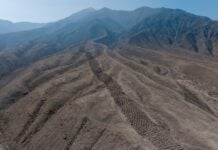Deep within an unremarkable clay pit in Murgon, Queensland—a small town nestled in southeastern Australia—lies a treasure trove for paleontologists. For decades, scientists have unearthed fossils from one of Australia’s oldest fossil sites, offering a rare glimpse into a time when the continent was still connected to Antarctica and South America. Now, an international research team has made a groundbreaking discovery: the oldest crocodilian eggshells ever found in Australia, shedding light on the lives and reproductive strategies of these extinct reptiles.
The fragile fragments, named Wakkaoolithus godthelpi, once belonged to mekosuchines—a group of now-extinct crocodiles that dominated inland waterways around 55 million years ago. These ancient predators predate the saltwater and freshwater crocodiles we see in Australia today by millions of years. Their arrival in Australia is dated back to roughly 3.8 million years ago.
“These eggshells provide a remarkable window into the intimate life history of mekosuchines,” explains Xavier Panadès i Blas, lead author of the study published in the Journal of Vertebrate Paleontology. “We can now investigate not only their unique anatomy but also how they reproduced and adapted to changing environments.”
Beyond Riverbanks: Drop Crocs of the Forests?
Mekosuchines occupied intriguing ecological niches unlike those filled by modern crocodiles. While saltwater and freshwater crocodiles are primarily aquatic, mekosuchines appear to have ventured beyond riverbanks and into forests. “It might seem strange,” says UNSW paleontologist Professor Michael Archer, “but some of them were likely terrestrial hunters lurking within the ancient woodlands.”
This theory is supported by evidence from younger mekosuchine fossils discovered in the Riversleigh World Heritage Area (northwestern Queensland) dating back 25 million years. These fossils suggest that some riverine species grew to immense sizes—at least five meters long—and possessed adaptations for semi-arboreal lifestyles.
“Imagine them as prehistoric ‘drop crocs,’ perhaps hunting like leopards,” Professor Archer speculates, “silently stalking prey in the treetops before dropping onto unsuspecting victims below.”
Eggshells: A Treasure Trove of Paleontological Secrets
The discovery of these fragile eggshells highlights their often-overlooked potential in paleontology.
“Eggshells preserve crucial microstructural and geochemical information that reveals not only the identity of the animals but also their nesting habits and breeding strategies,” Panadès i Blas emphasizes. “Our study underscores their value—eggshells should be routinely collected, analyzed alongside bones and teeth, becoming a standard component of paleontological research.”
By analyzing these fragments under specialized microscopes, researchers discovered that mekosuchines likely laid their eggs near the margins of a fluctuating lake, adapting their reproductive patterns to changing environmental conditions.
A Forest Oasis in a Warming World
Dr. Michael Stein points out that shrinking waterways and encroaching drylands may have contributed to the decline of mekosuchines. They would have faced competition from newly arrived crocodile species and dwindling populations of megafauna prey. Meanwhile, this ancient lake was surrounded by a lush forest teeming with prehistoric life: some of the world’s oldest-known songbirds, Australia’s earliest frogs and snakes, diverse small mammals with South American links, and one of the oldest known bat species.
A Legacy Beyond Fossils: Lessons for Conservation
Professor Archer emphasizes that discoveries like these offer more than just glimpses into the past; they hold crucial insights for safeguarding present-day biodiversity. He draws parallels between the ancient mekosuchines and Australia’s critically endangered Mountain Pygmy-possum, a species struggling under mounting climate change pressures.
Through the “Burramys Project,” Professor Archer and his team uncovered evidence that prehistoric relatives of this possum thrived in temperate lowland rainforests millions of years ago—environments similar to those found outside their current alpine habitat. This revelation led to the innovative strategy of establishing a breeding facility for Mountain Pygmy-possums in a non-alpine rainforest sanctuary near Lithgow. Today, these rescued animals flourish within this haven, mirroring the predictions gleaned from fossil records.
“The Burramys Project demonstrates that we can use past clues to develop conservation strategies,” Professor Archer asserts. “Fossil records matter not only for understanding our history but also for securing a future where threatened species can adapt and thrive.”




























